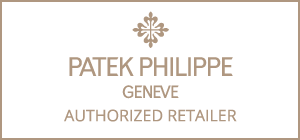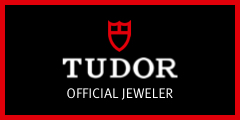Engagement Rings for Women
October 4th, 2022

What does it take to find ‘the one’? No, we’re not talking about your significant other – although it takes time and effort to find the one who sweeps you off your feet! We’re instead discussing your engagement ring. After all, you can own as many baubles as you want, but only one engagement ring to seal the deal. Elizabeth Taylor famously said, “Jewelry has the power to be the one little thing that makes you feel unique.” And what better way to do that than with your engagement ring? For this once-in-a-lifetime luxurious purchase, we recommend you weigh all your options before deciding on one. Seems like an uphill task? Not really, if you follow these pointers and approach the selection process systematically – in tune with your head and heart, both!
#1 The Choice of Engagement Ring Metal
Start here because the metal choice impacts everything from the overall cost and ring aesthetic to the center stone options. Platinum is the ideal choice if you don’t mind splurging a bit. It is extremely durable and low-maintenance, yet sophisticated and high-end. Do you lead a hectic lifestyle? Platinum is a life-saver if you don’t have much time to polish and look after the ring. Not just that, it is 30 times rarer and purer than its more popular counterpart – gold. But what makes gold a metal of choice for most of us? There are two reasons. One, it is so much more cost-effective than platinum. Two, if you’re looking for a more traditional ring, the sunshine hue of yellow gold is timeless. Shakespeare rightly said, “Gold – what can it not do and undo’”
In color, white gold is closer to platinum since the gold is mixed with nickel alloys and then coated in rhodium to form a protective layer. You can achieve the same shimmery white sheen as platinum at a fraction of the cost. Rose gold is the third gold variant that comes in a beautiful warm pink hue, created by alloying copper and gold together. Vintage and charming, it is apt for a woman who is gracefully feminine and romantic. Silver is one of the most pocket-friendly metals to use in your engagement ring, but it is also softer and requires a lot of extra care and regular polishing. Make informed choices based on your lifestyle and how much you’re willing to spend.
White gold is one of the most popular choices among contemporary brides. Not only does the cool moonlight hue look like platinum, but it also showcases the center stone and settings beautifully without drawing attention away from them.
#2 Shape of the Center Diamond Stone
With diamond shapes, even the most selective of us can get perplexed; each of them comes with such distinctive allure and beauty that it’s hard to look beyond. Look at celebrity engagement rings, and you’ll see they all make unique choices. JLo and Paris Hilton favored the old-world but very chic Emerald cut diamonds, while Kourtney Kardashian and Hailey Bieber glammed it up with oval-shaped rocks. And then you have the more unconventional pear-shaped diamond, which Ariana Grande and Cardi B flaunt. Although elongated shapes like the pear and oval make your diamond look bigger and more expensive, the classic brilliant round cut remains the most popular shape over time. Over 75 percent of couples getting engaged select a round diamond center stone. Ask Mila Kunis; she’ll tell you it works for her. Want to opt for a more unique shape? Try an Asscher-cut diamond like Pippa Middleton or a Cushion-cut one like Sofia Vergara. Or go completely off-the-beaten track and get a heart-shaped stone like Lady Gaga! Before you choose your diamond center stone, make sure your love for it is everlasting and not transient. You might also want to check out how size and cost differ for diamonds that weigh the same but are cut differently.
One of the earliest diamond cuts in the world, the Emerald cut is reminiscent of old Hollywood glamor. Understated, yet exquisite. Crafted out of 14k white gold, this ring features a 2.5-carat emerald cut ring in a three-stone setting.
#3 Choosing the Perfect Diamond Setting for Your Ring
The perfect setting is an aspect often overlooked, although it shouldn’t be. When you choose a diamond setting, it should be for a mix of practicality and aesthetics. The durability of the metal you use and the features of your center stone should impact your choice of setting.
The halo is immensely popular because it comprises a row of tiny diamonds encircling your center stone. It protects the diamond while accentuating its shine and giving the illusion of a bigger center stone. Hidden halos are also highly desirable for the understated way they play diamond peekaboo and add extra sparkle. Want to add even more volume to your solitaire? A double halo setting is the way to go. This means two rows of tiny diamonds encircle your center stone. Even a small center stone is enough for this kind of setting since the double halo adds much volume. Much less expensive than splurging on a larger center stone, right? For more subtle cuts, like the Asscher or Emerald, a double halo is wonderful for enhancing brilliance and impact.
Don’t you just love a halo that is also high on design? This 14k white gold ring features 0.23 carats of diamonds in a halo that glitter symmetrically around the 1-carat diamond center stone.
The prong setting for solitaires is apt since it is minimalistic and shows off the stone to its best advantage. However, if your stone is huge and the metal needs extra care, look for an alternative setting, or at least increase the number of prongs from four to six. Consider the bezel setting if your stones are softer or larger or if you lead a fast-paced routine where they are likely to fall out. It may not be as flattering as the other setting options since the diamond is surrounded by metal, but if crafted well, they offer sleekness along with security for your center stone.
#4 Carat Weight of the Center Diamond Stone
Carats are often confused with size, but they actually refer to weight. One carat weighs 0.200 grams, so it is reasonable to assume that a heavier diamond is also larger and more coveted. If only big rocks were that simple to lay our hands on! Budget is often the most common constraint when choosing your diamond carat. But there is a solution to that!
If you have a limited amount set aside for your engagement ring, ask yourself a question – would you rather have a larger stone with some flaws or a smaller stone with fewer flaws? If it is the former, choose a lower color grade or clarity grade – nothing too noticeable but pocket-friendly at the same time.
Another way around is to pick up something that’s very slightly lighter than your desired carat weight. Let’s say you’ve set your heart on a 2-carat diamond ring. Picking up a 1.8-carat ring instead is far cheaper, and the size difference is barely discernible. Factor in that the price increases exponentially with every extra carat – so a 2-carat ring is not just double of a 1-carat ring. It is far more, simply because larger stones are much rarer to find, cut, and polish. The diamond cut and shape can also impact your choice of the carat weight. Pear, marquise, diamond, and oval cuts look apparently heavier and bigger than they are because of the elongated shape. You can be smart and opt for these as well.
This ring is all set to accommodate a 1.5 carat diamond oval cut center stone that is sure to look fabulous on your finger! Crafted out of both white and yellow gold juxtaposed against each other, it also features a hidden halo for some subtle shimmer.
#5 Preference for Any Colored Gemstones, and Birthstones
Are diamonds too cliche for you? Then, for the flamboyant you, there are a host of other gemstones to consider when purchasing your engagement ring. Perhaps a pop of color with a brilliant blue sapphire, the opaque roughness of quartz, or the luminescence of a white-grey pearl shall entice you. No woman can resist the sheer luxuriance of red rubies and green emeralds. There are several aspects to consider, though, over and above the color of your stone. The first is its hardness on the Mohs scale. A diamond is a 10, the highest and the toughest, so you know it’s sturdy. The other three precious stones – emeralds, sapphires, and rubies – measure a robust 9 on the Mohs scale. On the other hand, a pearl is very soft and requires extra care and maintenance. Whatever stone you pick to buy, ensure you’re willing to put in the care and maintenance it needs. Also, look for authentication certificates, and assess if the precious stone is worth the deal before you seal it!
#6 Engagement Ring Band or Shank Style
All the attention is usually on the stone and setting, but the ring’s shank style visually impacts how the ring looks. The most unadorned shank style is a plain band, which holds the center stone. It can be flat or rounded, depending on your preference. The tapered shank is a wonderful variant if you find this too boring. It is the same as a plain band, except it tapers off at both ends where the shank meets the stone. Not only is this sleek and contemporary, but it also makes the stone appear bigger. Want some glitter? Add a row of diamonds across the shank to impart added glamor to your ring. Split shank, free form, twisted, and bypass are some other shank styles for those who look for a distinct appeal in their engagement ring designs.
This tapered shank is encrusted with a row of diamonds that weigh 0.36 carat and is perfect to hold a 1 carat round cut diamond center stone. Set in 14k white gold, it is ideal for the classic bride who doesn’t want her style to be predictable.
Split shanks have risen in popularity because they’re affordable and give the illusion of more metal and volume. A single shank splits into two on either side of the center stone and conjoins on the opposite side. If you seek something ultramodern and Avante-garde, bypass shank is your answer. The bypass shank is called so because the two ends of the shank never meet – instead, they wrap themselves around the diamond on opposite ends like swirling ribbons.
The cathedral shank is slightly raised at the center stone, putting the diamond on a pedestal. The raised disposition makes the diamond look bigger, but it also means you’ve got to be more careful with it. If you want the focus on your ring rather than just the center stone, a wide band is a great way to draw attention to the shank and its elements.
#7 Engagement Ring Cost and Budget
It’s natural to want Princess Grace’s massive 10-carat rock or Meghan Markle’s dazzling three-stone ring. But who wants to start their engagement in debt? You shouldn’t have to. Not because of an engagement ring, at least. Be realistic about what you can afford while keeping in mind that this is a significant jewelry piece and a lifelong sentimental and financial investment.
The three-month rule has been the golden rule of engagement ring shopping for decades now. An amount equal to three months’ salary is earmarked to spend on your ring. However, some contemporary couples have set this rule aside in favor of the two-month rule. The average spend on an engagement ring in the United States is $6,000, but 10 percent of people spend below $1,000. On the other side of the spectrum are a few who are glad to splurge as much as $50,000. Find a price point that works for you, and slowly approach your wedding ring goals keeping all the other factors in mind.
Channel your inner princess with this stunning vintage-inspired ring made from 14k rose gold. The gorgeous shank is dotted with diamonds weighing 0.26 carat, while the center stone is the gleaming 1-carat round cut diamond.
#8 Considering the Personality and Preference of the Wearer
We all love surprises, don’t we? But if it is something as precious as a diamond ring, it is prudent to include the preference of the one wearing it or, even better, go shopping together. After all, you do not want to let your partner’s expectations down or lose money remaking or exchanging the ring. In fact, 62 percent of couples endorse the idea of shopping together for engagement rings. If you want a giant rock and can compromise a bit on the diamond clarity, or there is a certain kind of metal you’re allergic to, tell your partner upfront! Return the favor and ensure your partner’s ring is also chosen with the same care and consideration. It is one of the significant initial decisions you make as a couple, and it says a lot about relationship compatibility. In an ideal scenario, both of you should agree on and like both engagement rings.
#9 Engagement Ring Size and Fit
You bet! It may seem like a trivial aspect that you can always deal with later, but don’t assume that. Ensure the ring fits snugly from the word go – not too tight to get stuck or too loose to fall off. Just like your spouse-to-be, the ring should be a perfect fit. The best way to achieve that is by trying it on before you make a purchase. You can also buy a ring sizer, which helps you easily shop for a specific size. Even if your band is being customized or resized, always try it out and don’t settle until it is perfect to the T. That’s not all – your fingers may change size over time, so make sure your ring can be resized without much fuss or compromise on the appearance or quality.
#10 Functionality and Versatility of the Ring
Yes. The final qualities to look for in your ring are functionality and versatility. Your ring needs to seamlessly blend in with your lifestyle and be an adorned extension of your personality. For instance, if you do a lot of gardening or heavy work with your hands, a sturdy platinum band should hold your diamond in a bezel setting. If you’d like to stack it with your wedding band on the same finger, ensure the two complement each other well. Remember, you have to wear it every day so choose wisely. And for women who need variation in their daily style, the ring’s versatility is a crucial criterion. You should be able to stack it up with other rings in your collection, and also, it should complement your personal style of dressing really well!
Your fairy-tale ring is perhaps something you don’t want to give up on, but remember, your choice has to comply with real life! Keep a balance of romance and sensibility in mind when choosing your favorites.





